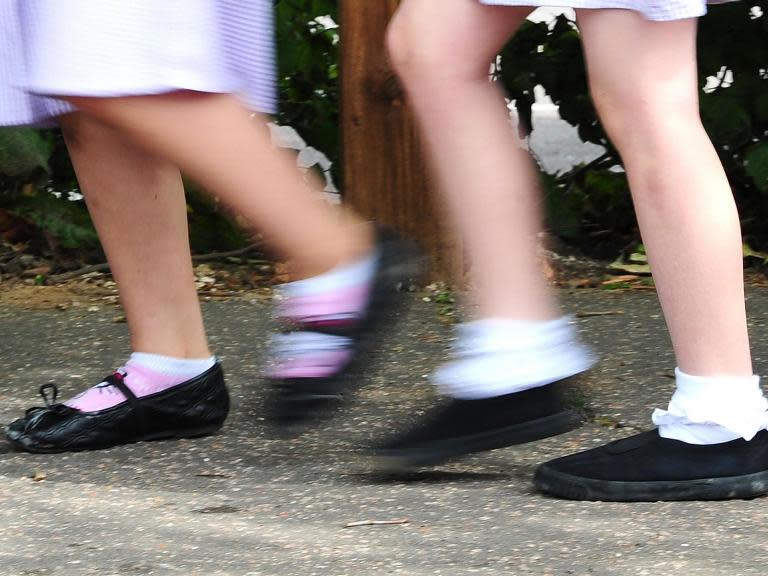Schools can be a hotbed of sexual abuse for vulnerable young girls, yet no one is protecting them
A few months ago, in a school workshop session about sexism, gender stereotypes and future aspirations, I asked a group of children aged 13 and 14 how their lives might be different if they were the opposite sex. I expected some illuminating responses about clothes and hobbies, socially expected behaviours, perhaps likes and dislikes.
The first girl to put her hand up tentatively answered the question by saying: “You wouldn’t be scared all the time.” After she spoke, almost every other girl who raised her hand talked about safety. They described crossing the street when they saw groups of men, avoiding certain routes home after dark, and taking preventative measures to avoid being raped. One girl described gripping her hockey stick like a weapon on her way home from practice.
We are used to the upsetting truth that women practice constant vigilance to protect themselves from harassment, abuse and assault. But it was devastating to hear the same reality voiced by such young girls.
After some of them had spoken, I asked all the girls in the room to raise their hands if they had had similar thoughts about safety issues, or adjusted their behaviour because of these sorts of concerns. Almost every hand was raised. Then I asked them to raise their hands if they had ever discussed this with anybody before today. Only around a fifth of the hands stayed up. So girls learn to fear for their safety. And they learn to keep quiet about it.
When I talk about these issues outside of schools, there is a perception that the risks and challenges girls face come from the outside: from shadowy strangers waiting in dark street corners. The reality is far more serious.
We like to think of school as a place where young people are safe, and of home as a place of refuge. We like to imagine that sexual violence on school property is a rare aberration, with survivors properly supported and the problem stringently tackled. It isn’t.
In reality, statistics suggest that around one rape per school day is reported to police as having occurred within a UK school. We know that almost a third of 16- to 18-year-old girls experience “unwanted sexual touching” (a form of sexual assault) while at school, and that the sexual bullying of girls using words like “slut” and “slag” is rife. We also know that online abuse and social media shaming is common, but we aren’t always very good at connecting the dots between the two.
In my experience, having worked with girls in hundreds of schools across the country over the past six years, and heard from thousands more through my Everyday Sexism project, the sexism and harassment that happens at school often seamlessly blends with the abuse that takes place online.
These aren’t two separate problems, but part of the same onslaught. And when sexual bullying is taking place online it continues 24 hours a day, with no respite at home or anywhere else.
When I talk to adults about these issues, there is a common temptation for people to stick their heads in the sand: to want to believe that these problems are rare, or that “PC warrior snowflakes” are exaggerating the realities of online harassment.
But let me be very clear: we are talking about a problem that affects thousands of girls. I have never visited a school where a young person hasn’t had a story to tell, whether about herself or somebody else she knows. These problems aren’t specific to any single type of school – state or private, rural or inner-city, single-sex or mixed.
They are not “minor” issues: we’re talking about girls being placed under enormous pressure to send naked photographs of themselves using mobile phones, then blackmailed into further sexual activity by threats to circulate the pictures. We’re talking about assault victims being slut-shamed and ridiculed by their peers and rape survivors being forced back into the classrooms with perpetrators. About online abuse so bad that it includes encouragement to “kill yourself”, images photoshopped onto porn pictures, harassment so intense that mental health can be severely damaged and many girls end up moving to different schools altogether.
When I wrote about these issues in my new book, The Burning, I knew that some people would be shocked by the story. But for many teenage girls, this is the wallpaper of their daily lives. Adults simply don’t want to believe that this is happening. But it’s time to start listening.
‘The Burning’ by Laura Bates is out now



